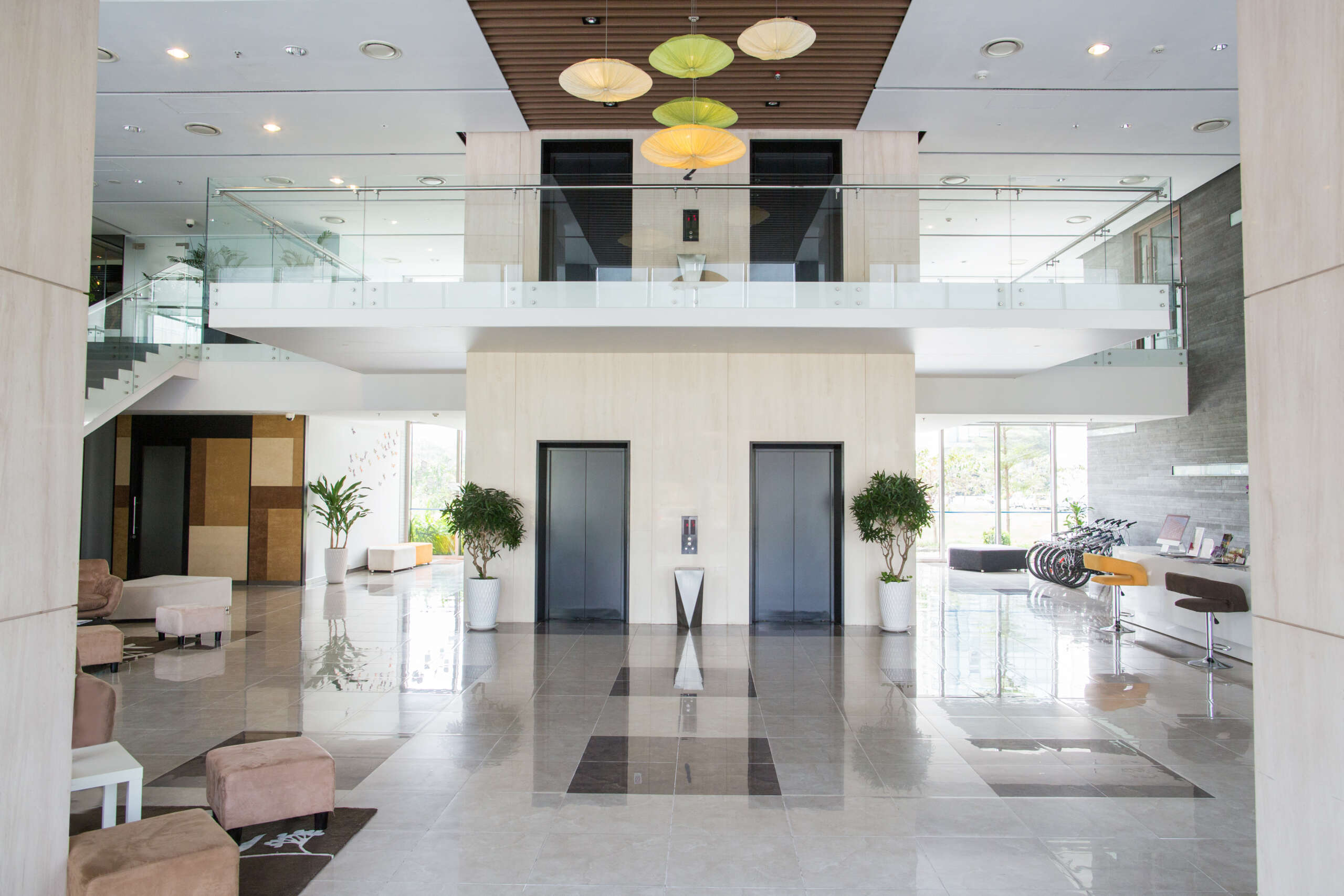Clean air isn’t just a comfort—it’s a crucial component of productivity, health, and compliance in commercial environments. From offices to industrial facilities, maintaining air quality ensures employee well-being, regulatory compliance, and operational efficiency. This article outlines the best practices for maintaining clean air in commercial spaces, with a focus on HVAC systems, maintenance schedules, and emerging technologies.
What Makes Up a Commercial HVAC System?
Commercial HVAC systems are more complex than residential systems, as they manage larger volumes of air and must regulate conditions across varied environments. These systems typically include:
- Centralized air conditioning units
- Furnaces or heat pumps
- Ventilation ducts
- Humidifiers and dehumidifiers
- Air purification equipment
Each component plays a role in regulating commercial indoor air quality and must be properly maintained to ensure efficiency and cleanliness.

The Importance of Commercial HVAC Maintenance
Regular maintenance of HVAC systems helps eliminate airborne contaminants, reduces energy bills, and extends equipment lifespan. But beyond economics, it plays a vital role in health and compliance.
Energy Efficiency, Environmental Considerations & Tax Incentives
A well-maintained system operates more efficiently, reducing energy consumption and emissions. Governments and municipalities often provide tax incentives for upgrades that improve the indoor air quality in commercial and institutional buildings.
What Maintenance Does a Commercial HVAC System Need?
To support a clean air office or clean air shop, systems should be serviced regularly. This includes:
- Filter replacements
- Coil cleaning
- Vent and duct inspections
- System calibration
- Airflow testing
Partnering with an air ducts cleaning company ensures each aspect of the system is thoroughly cleaned and inspected.
Commercial HVAC Maintenance Schedule
A maintenance schedule should be customized based on building type, system size, and occupancy. However, a general guideline is:
- Monthly: Replace or clean filters
- Quarterly: Inspect ductwork, test humidity controls
- Annually: Deep clean coils, calibrate systems, inspect insulation
For deeper maintenance, services like commercial air duct cleaning services or professional commercial dryer vent cleaning are essential in preventing buildup and contamination.
Factors Influencing Maintenance Frequency
Many factors for good indoor air quality in commercial buildings include:
- Number of occupants
- Building age and layout
- Industry-specific pollutants (e.g., dust in manufacturing)
- Local air pollution levels
- Seasonality and weather patterns

Advanced Solutions for Indoor Air Quality
Investing in the total shop clean air system or industrial clean air solutions can drastically improve working conditions. These systems use high-efficiency particulate air (HEPA) filters, UV sanitization, and real-time monitoring to purify air and control allergens, viruses, and chemical vapours.
How to Clean Air in Office Environments
Maintaining indoor office clean air requires both system upgrades and behaviour changes:
- Install localized air purifiers
- Encourage plant use for natural filtration
- Prohibit indoor smoking
- Promote clean desk policies to reduce dust accumulation
- Regularly schedule professional cleaning of the condenser
These steps collectively form a robust strategy for how to clean air in office environments.
Regulatory Considerations
Understanding and complying with regulations of commercial building air quality is essential to avoid penalties and protect occupants. These standards often cover:
- Minimum ventilation requirements
- Maximum levels of pollutants like CO₂ and formaldehyde
- Humidity and temperature ranges
- Frequency of air quality assessments
Building managers should also stay updated on indoor air quality statistics for commercial buildings to benchmark and improve performance.
Monitoring and Analysis
A consistent indoor air quality analysis of commercial reference buildings helps businesses pinpoint problem areas and evaluate improvements over time. This process typically includes:
- CO₂ monitoring
- Particulate matter (PM2.5, PM10) measurement
- VOC (volatile organic compound) detection
- Humidity and airflow checks
Monitoring is especially crucial in environments that handle chemicals or have high human traffic, such as healthcare facilities and retail centres.
Whether managing a clean air for shops initiative or optimising an air building commercial indoor quality program, proactive air management enhances health, comfort, and compliance. Through scheduled HVAC maintenance, smart technology investments, and professional services, your business can deliver exceptional indoor air quality commercial standards.
Recommendations for Regular Maintenance
To maintain consistently high air quality levels, building managers and facility operators should implement routine maintenance protocols. Here’s what we recommend:
- Schedule biannual HVAC inspections to detect wear and inefficiencies early.
- Change filters monthly or as specified by the manufacturer, especially in high-traffic commercial areas.
- Clean air ducts and vents quarterly with a trusted air duct cleaning.
- Inspect and clean condenser units annually with cleaning of the condenser.
- Conduct periodic indoor air quality testing to benchmark against local standards.
- Ensure humidity levels are within 30–60%, using humidifiers or dehumidifiers if necessary.
- Train cleaning staff to use low-VOC products that won’t compromise air quality.
Maintaining your HVAC system and facility regularly is key to ensuring long-term commercial indoor air quality performance.

Signs of Problems with HVAC Systems in Commercial Buildings
Recognising the symptoms of declining air quality or system malfunctions can help avoid costly breakdowns or health hazards. Here are some common warning signs:
- Unusual Odours: Musty or chemical smells may indicate mold in the ducts or off-gassing from building materials.
- Visible Dust or Mould: Accumulated particles around vents or visible mould suggest duct contamination.
- Inconsistent Temperatures: Hot or cold zones in a commercial space can signal airflow issues or thermostat malfunctions.
- Excessive Humidity or Dryness: Improper humidity levels can encourage mold growth or dry out mucous membranes.
- Frequent Illness or Allergies: If occupants often suffer from headaches, fatigue, or allergy-like symptoms, poor indoor air quality may be the culprit.
- Noisy HVAC Operation: Loud bangs, hissing, or vibration noises may point to mechanical failure or obstructed airflow.
- Higher Energy Bills: A sudden spike in energy costs may mean the system is working harder due to clogged filters or damaged components.
These signs should not be ignored. They could indicate issues affecting the indoor air quality in commercial and institutional buildings, or even breach regulations of commercial building air quality.
Take Back Control of Your Indoor Air Quality
Business owners and facility managers should not wait for complaints or inspections to address air quality. Proactive steps include:
- Investing in industrial clean air solutions
- Creating internal policies for indoor office clean air standards
- Educating staff on how to maintain clean air office habits
- Reviewing indoor air quality statistics for commercial buildings to stay competitive and compliant
By acting now, you avoid long-term costs and create a healthier, more productive environment.
Summary
Maintaining air building commercial indoor quality is no longer optional—it’s a necessity. From identifying early symptoms to choosing the right solutions, the path to better air quality starts with awareness and consistency. Whether you’re managing an office complex or a retail store, applying best practices ensures cleaner air, healthier occupants, and improved performance.
From implementing a total shop clean air system to scheduling professional services like dryer vent cleaning and air duct maintenance, you have the tools to transform your building’s air.



